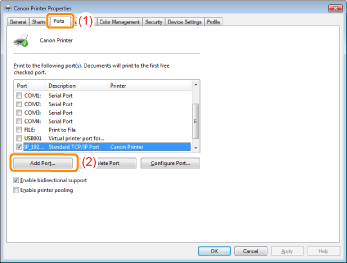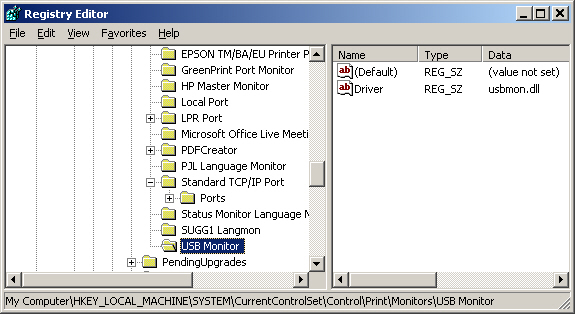

- #LPR VS USB VIRTUAL PORT SERIAL NUMBER#
- #LPR VS USB VIRTUAL PORT DRIVERS#
- #LPR VS USB VIRTUAL PORT DRIVER#
- #LPR VS USB VIRTUAL PORT WINDOWS 10#
The HP JetDirect printing® protocol is one of the most widely used for network printers. Printers do not rely on PCs and are therefore more likely to be online.Share printers with more than one application.There are several benefits to connecting the printers directly to the network: The output is transmitted directly to the printer without staging or spooling, saving system resources and enhancing print routing performance.The printer location is independent of workstations and servers.TCP/IP-connected printers are not subject to the routing limitations using DLC.Non-Microsoft clients, such as Unix workstations, can print to queues defined on the NT server.


#LPR VS USB VIRTUAL PORT DRIVERS#
Create a new port using your Pi info, and setup the printer using the newly available "LPR port" you created.Ģ) Since the drivers for the Samsung ML-2545 are not available for the Raspberry Pi, the printer was configured as a Generic printer it wasn't recognized as that device by Windows either. (Doh!) so you need to add them:Ĭontrol panel -> Programs and Features -> Turn Windows Features on or off -> under "Print and Document services", make sure both LPD and LPR services are checked -> click OK.
#LPR VS USB VIRTUAL PORT WINDOWS 10#
Here's what I finally found needed to be addressed to make it work:ġ) Windows 10 "home" (at least) does not have the LPR "port" drivers installed, which are needed to use this, even though there are mis-leading indications in some of it's dialog panels that it does. I setup the Raspberry Pi per the instructions above, but couldn't get it to work.
#LPR VS USB VIRTUAL PORT DRIVER#
I struggled for a while trying to get this to work with a Samsung ML-2545 printer (really low cost mono 20ppm workhorse that just keeps coming back for more.) from Windows 10, using the Samsung Universal Print Driver 3. It might've been cool relying on PostScript twenty years ago in a carefully staffed corporate Unix environment (it was! I did!), the Raspberry Pi is a consumer device and the user or this forum is the only support available.

While CUPS is bloated and a bit confusing, it did eliminate the variability (and potential security issues) in moving large chunks of executable PostScript code around systems. Also, lprng doesn't use the same "everything is a PDF" approach that CUPS uses. Most of the printer questions here are about connecting printers that only have x86 Linux drivers, or no Linux drivers at all. While it works well if you have a printer supported by GhostScript, modern driver support seems a bit lacking: I bet my no-name USB receipt printers wouldn't work with it. I remember lprng from my earlier Linux days.
#LPR VS USB VIRTUAL PORT SERIAL NUMBER#
What this rule does: every time the USB device with Vendor ID 04a9, Product ID 266a and serial number 0000A1551Krc is attached, udev creates a device node for it called /dev/usb/lbp3000.


 0 kommentar(er)
0 kommentar(er)
